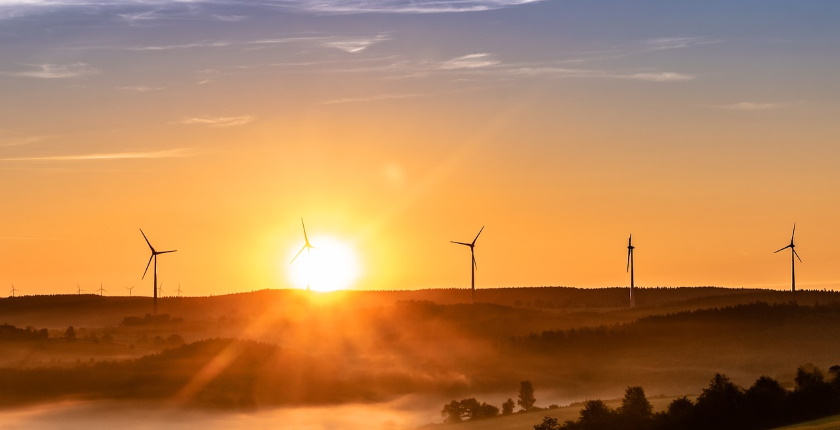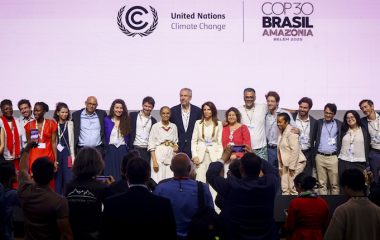
Photo: Myriams-Fotos from Pixabay
The International Renewable Energy Agency said net carbon dioxide emissions must be cut to zero in order to keep the increase in global temperature to 1.5 degrees Celsius by mid-century. It implies a 30% rise in planned investment in renewables and new technologies, to USD 131 trillion.
In the best-case scenario for the world’s energy transition, total final energy consumption should drop 7.9% from 2018 to 2050 and electricity, predominantly from renewable sources, must have a majority share in the mix, according to a preview of this year’s World Energy Transitions Outlook study. The International Renewable Energy Agency – IRENA said the current policies and plans lead to just a slight drop in carbon emissions and that they are far from enough to control global warming.
In order to hold the rise in temperature under 1.5 degrees Celsius from preindustrial times, emissions need to drop to net zero, the document reads. The study’s authors calculated energy transition investment would have to increase by 30% over current plans to a total of USD 131 trillion between now and 2050.
Emission reduction trend seems to be reversing
In anticipation of the coming energy transition, financial markets and investors are already directing capital away from fossil fuels and towards other energy technologies including renewables, IRENA said.
La Camera: All coal plants in the pipeline should be abandoned
“Emissions have continued to increase, except in 2020, when the COVID-19 pandemic caused a dramatic economic slowdown. Indications are that a rebound is very likely to happen, at least in the short term,” the organization’s Director-General Francesco La Camera stated.
In his words, all coal plants in the pipeline should be abandoned to limit global warming. La Camera noted renewables routinely outpace fossil fuels and nuclear combined in newly installed capacity. He pointed out that more than 170 countries have targets for green energy and that 30 are already set to achieve net zero in the coming decades.
Share of fossil fuels seen dropping to 10%
The latest data shows 2020 was a record year for wind and solar photovoltaic markets, with 71 GW and 115 GW, respectively, in new capacity.
The optimistic scenario implies a fall of coal’s share to 2% by 2050 from 11%, registered for 2018. In the same period, natural gas declines to 4% from 16% and oil dwindles to 4% from 27%. Electricity substitutes most of the volume from fossil fuels, reaching 51%, compared to just 21% from 2018. At the same time, the share of renewables in electric power jumps to 90% from 25%.
In that case, oil can maintain its role mostly for the production of petrochemicals and in aviation and shipping.
Hydrogen, carbon removal must come to fore to ease global warming
IRENA recommends electrification of end-use sectors, with the increased use of electricity in buildings, industry and transport, and energy efficiency and circular economy measures. It said green hydrogen, synthetic fuels and raw materials would indirectly help electrification.
The energy transition and the push to limit global warming require a limited deployment of carbon capture and storage (CCS) and carbon dioxide removal (CDR) technologies, according to the document, which places additional focus on the use of biomass with CCS (BECCS) as an additional solution. There is a role for carbon capture and use (CCU) in industrial production.
Sectors like marine energy, electric vehicle infrastructure and grid flexibility have a notable role in pushing net carbon emissions to zero
Among the estimated investments necessary for the best-case scenario, IRENA pointed to several sectors that are currently marginal: marine energy, hydrogen electrolyzers and infrastructure, carbon removal, recycling and biobased products, biobased ammonia and methanol. They all grow from almost zero in 2017 to 2019 to as much as USD 78 billion per year, in the case of hydrogen electrolysers and infrastructure as well as carbon removal technologies.
Other notable leaps on an annual scale are seen for grid flexibility solutions like power storage – from USD 4 billion to USD 133 billion, charging infrastructure for electric vehicles – from USD 2 billion to USD 131 billion, and concentrated solar power – from USD 3 billion to 84 billion.









Be the first one to comment on this article.